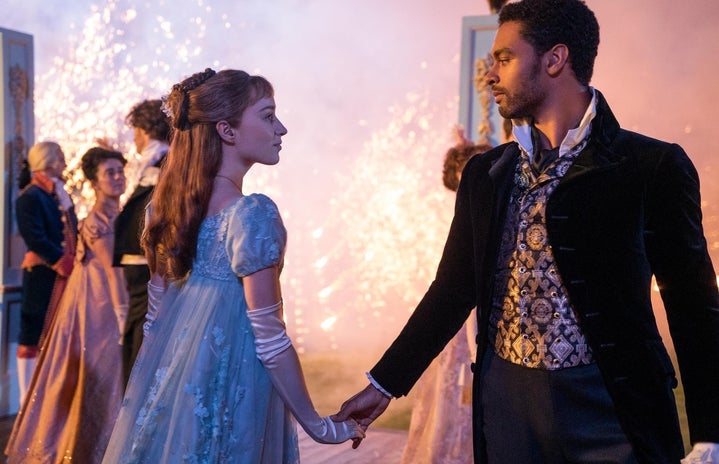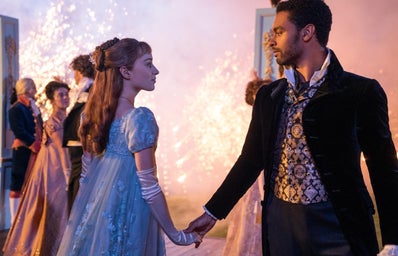I’m a glutton for on-screen dramas, soap operas, and reality shows solely because they offer a colourful escape from my mundane reality in lockdown. Netflix’s Bridgerton successfully transported me into a flashy, Mad Hatter version of Regency-era London, with historically inaccurate costumes and set designs that failed to distract me from its overly clichéd plot that was an obvious rip-off from Jane Austen’s classics. However, with its racially diverse cast and promise of pure entertainment, Bridgerton was a lockdown saviour.
Based on Julia Quinn’s book series, Bridgerton features the intertwined storylines of two high society families — the Bridgertons and the Featheringtons. Since it is the start of the social season, the eldest daughters are dolled up for their big debuts in the hopes of being matched up with England’s most eligible bachelors; the ones with a title and a large estate being the prize catch.
The highlight of the show is the steamy, R-rated romance between Daphne Bridgerton and Simon Basset, the Duke of Hastings, whose dashing, forever brooding looks have made him a fan favourite. Despite their love-hate relationship being strongly reminiscent of Pride & Prejudice characters Elizabeth Bennet and Mister Darcy, the on-screen chemistry between the actors Phoebe Dynevor and Regé-Jean Page (who gave us the now-iconic phrase “I burn for you”) is one-of-a-kind, sparking speculation about their off-screen relationship.
What happens in your personal life, whether it be an unsuitable lover or a hidden pregnancy, does not stay personal in Bridgerton. Every scandal is subject to public scrutiny due to the show’s very own Gossip Girl, Lady Whistledown. Between the sex scenes and the hunt to unmask Lady Whistledown, Bridgerton manages to keep viewers hooked, despite the hour-long episodes.
The constraints of the patriarchy loom over the lives of female characters in Bridgerton, such as the orchestration of marriages of convenience by older brothers for their sisters, or the fear of public disgrace if an unmarried woman is revealed to be sexually active. However, unorthodox characters such as Eloise Bridgerton, who is typically seen toting a book and a cigarette, and Queen Charlotte, the country’s matriarch with the temperament of Marie Antionette, challenge the popular belief that a woman is powerless without a man. However, the show focuses more on the romantic leads rather than on its powerful women. This makes the plot of Bridgerton even more unoriginal and predictable, resulting in sickeningly cheesy, Shakespearean dialogues and unnecessary love scenes that are time fillers and thirst traps.
Critics of the show have pointed out many historical inaccuracies, be it about the corsets or the inclusion of black characters in a time period of domestic slavery and lack of recognition for black nobles. This surprised me because minutes into the first episode of the show, it is glaringly evident that the Bridgertons and Featheringtons live in a fictional society, especially since it all seems very theatrical, from the superimposed, picture-perfect sceneries to the glitzy frocks and hairdos. This show has to be taken at face-value because there is no depth, be it in the script or the historicity.
Overall, while I did skip through some episodes to get to the juicy drama, Bridgerton was a much-needed brain break during our winter holidays. I am looking forward to season two, solely because of season one’s revelationary ending where the identity of Lady Whistledown is finally revealed.



